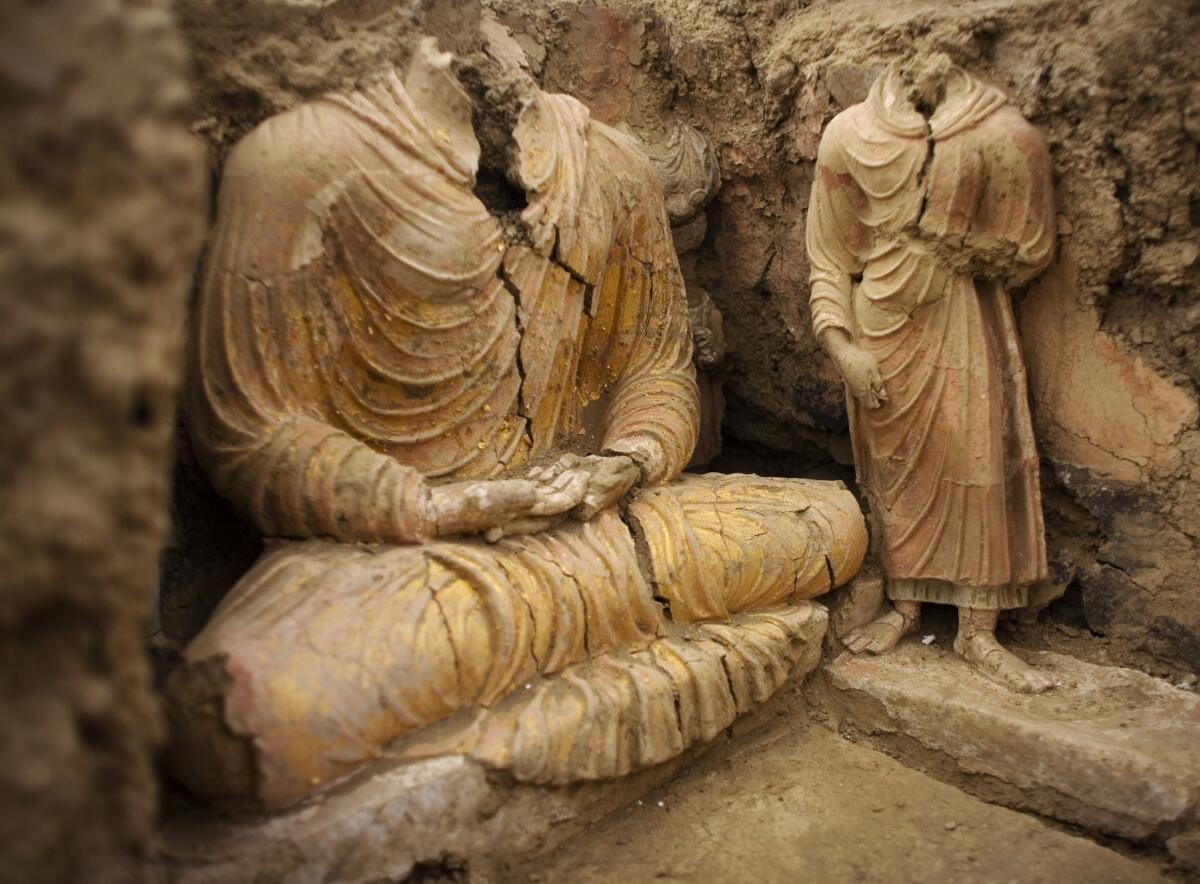Round-Up: Did art solve a murder? Plus a 2,600-year-old city

Archaeologists furiously excavate a millennia-old city before it becomes a copper mine, iPad tortoises are retired, a new doc looks at the history of African American photography and there is a drought, but it appears as though the rich have been unaffected. This and more in today’s Round-Up:
— Let’s start with water, as in our dwindling supply of it. Rich people are cutting their consumption from municipal systems … by trucking their water in. Yay, civic responsibility! (Gizmodo)
— Archaeologists are struggling to excavate a 2,600-year-old city in Afghanistan (with artifacts dating back to the time of Alexander the Great) before it is turned into a copper mine.
— The controversial Aspen Museum iPad tortoises have been retired and relocated to warmer climes. Wondering what the art industry will treat us to next: donkeys with Google Glass?
— Plus: Washington City Paper offers six ideas for keeping the Corcoran Gallery relevant in the wake of its absorption into the National Gallery and George Washington University.
— How a work of art by Robert Rauschenberg led to a break in a decades-old murder case.
— The Atlantic has a terrific photo essay about the urban oil fields of Los Angeles.
— Video gaming is no longer just a man’s world. (The macho tech writer quote in the last paragraph of this article makes me grit my teeth.)
— A history of African Americans in photography, from the days of slavery to the post-Michael Brown hashtag #IfTheyGunnedMeDown, is discussed in WNYC’s story about the new documentary, “Through a Lens Darkly: Black Photographers and the Emergence of a People.”
— Artist Dread Scott’s op-ed article on Ferguson, Mo., for the Walker Art Center’s blog offers an interesting examination of the Supreme Court’s Dred Scott decision of 1857, which denied citizenship to African Americans.
— And a terrific essay by Teju Cole on blackness in America: “You are a black body first, before you are a kid walking down the street or a Harvard professor who has misplaced his keys.”
— Russia wants Bulgarians to stop vandalizing Soviet-era monuments. Which is unfortunate, because this is one of the best cases of art vandalism I’ve ever seen. (@sansuzie)
— The L.A. County Museum of Art is on Snapchat. Hopefully it’ll be transmitting all its art’s naughty bits.
— Born before 1985? You are part of the last generation in history to know life before the Internet.
— The architecture of dystopia: a look at how art and design projects made entirely out of materials such as wood and bamboo foreshadow a future when crude shelters are all we might be able to build.
— Speaking of dystopia, the new Atlantic Media/Siemens State of the City Poll finds that Americans who live in the suburbs are most satisfied with their quality of life.
— Plus, when good facades go bad: Writer Oliver Wainwright is no fan of that shotgun marriage between real estate developers and historic facades. (I have to confess to liking the bottom one.)
— Burning Man as corporate off-site for Silicon Valley brogrammers, complete with air-conditioned yurts and models flown in from New York.
— The New Yorker has a worthwhile profile of Cassandro (Saúl Armendáriz), the drag-queen Mexican wrestler who many Angelenos may recognize from his glamorous turns on Lucha VaVoom.
— On the act of social-media braggadocio (and #humblebragging) in two articles: The first, an essay in Ploughshares about “Writers You Want to Punch in the Face(book).” The second, a follow-up article about the me, me, me in social media, by Teddy Wayne in the New York Times.
— Finally, because we all need this: a digital animation of the Sunset Foot Clinic sign. Thank you, Internet. (Rhizome)
More to Read
The biggest entertainment stories
Get our big stories about Hollywood, film, television, music, arts, culture and more right in your inbox as soon as they publish.
You may occasionally receive promotional content from the Los Angeles Times.







